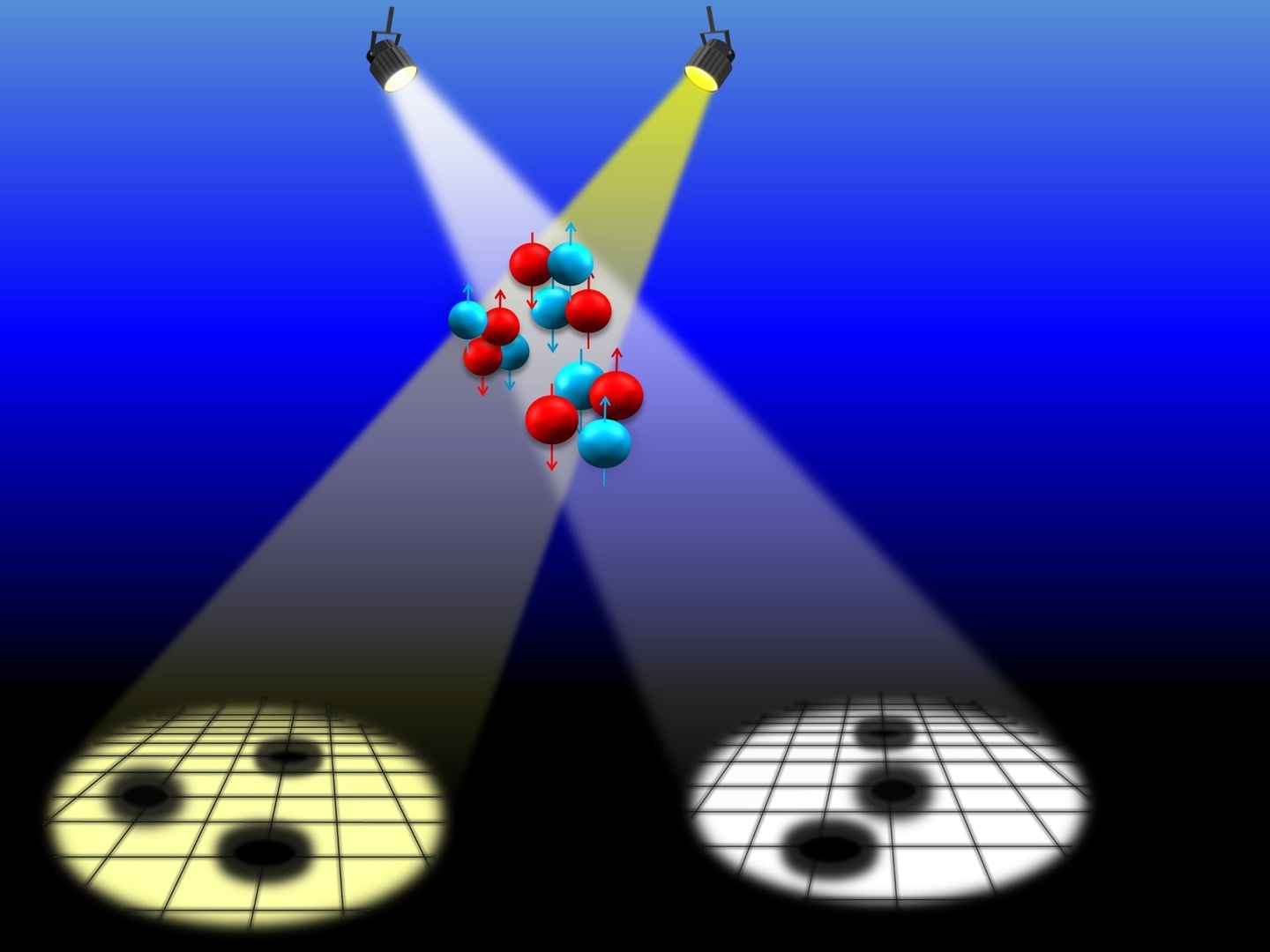What does the nucleus of an atom of carbon look like inside? The first comprehensive response to the subject comes from a recent study conducted by Forschungszentrum Jülich, Michigan State University (USA), and the University of Bonn. All of the nucleus’s known energy levels were reproduced by the researchers for the study. One of these is the mysterious Hoyle state.

The neutrons and protons - are present in the carbon nucleus as three clusters of four. Depending on the energy state of the nucleus, these can be arranged into an equilateral triangle (left) or like a slightly bent arm (right). Image Credit: Prof. Serdar Elhatisari/University of Bonn
Only minute amounts of carbon and oxygen would be found in the universe if it did not exist. Therefore, ultimately, humans owe it their own existence. The study was published in the journal Nature Communications.
A carbon atom’s nucleus typically consists of six protons and six neutrons. But how are they actually set up? And how does their arrangement alter when high-energy radiation is directed at the nucleus? Science has been looking for solutions to these issues for many years, not least of all because they could hold the answer to a riddle that has long confounded physicists: Why is there a significant amount of carbon at all in space, an element that is necessary for life to exist on Earth?
After all, there was just hydrogen and helium right after the Big Bang. A single proton makes up the nucleus of hydrogen, while two protons and two neutrons make up the nucleus of helium.
Aging stars produced the heavier elements only after many billions of years. In them, under tremendous pressure and at incredibly high temperatures, helium nuclei merged with carbon nuclei.
Three helium nuclei must fuse to do this.
But it is actually very unlikely for this to happen.
Dr. Ulf Meißner, Professor, Helmholtz Institute of Radiation and Nuclear Physics, University of Bonn
Dr. Meißner is also a professor at the Institute for Advanced Simulation at Forschungszentrum Jülich.
The explanation is that helium nuclei collectively have a lot more energy than carbon nuclei. However, this does not imply that they fuse easily; rather, it is as though three individuals were attempting to board a merry-go-round. However, they are unsuccessful because they run considerably quicker than the merry-go-round rotates.
Simulation on the Super Computer
Therefore, the British astronomer Fred Hoyle hypothesized that the three helium nuclei initially combined to generate a type of transition state as early as the 1950s. The energy of this “Hoyle state” is extremely similar to that of helium nuclei. It is a faster-spinning merry-go-round, so the three people can quickly board it to remain in the picture.
The carousel slows down to its regular speed at that point.
Dr. Meißner added, “Only by taking a detour via the Hoyle state can stars create carbon at all in any appreciable quantity.”
He is also a member of the Transdisciplinary Research Areas “Modeling” and “Matter” of the University of Bonn.
He initially achieved the simulation of this Hoyle state around 10 years ago, working with partners from the USA, Forschungszentrum Jülich, and Ruhr-Universität Bochum.
He explained, “We already had an idea then of how the protons and neutrons of the carbon nucleus are arranged in this state. However, we were not able to prove with certainty that this assumption was true.”
The researchers have now achieved success using a cutting-edge methodology. Essentially, this is based on confinement: The nucleons, or protons and neutrons, could actually be found anywhere in space. The team, however, limited this freedom for their calculations:
Meißner further stated, “We arranged our nuclear particles on the nodes of a three-dimensional lattice. So, we allowed them only certain strictly defined positions.”
Computing Time: Five Million Processor Hours
This limitation made it feasible to compute the velocity of nucleons. This is a particularly challenging process since nuclear particles interact differently depending on their proximity to one another.
The simulation was also repeated a million times with slightly varied initial circumstances by the researchers. They were able to determine the most likely locations of the protons and neutrons as a result.
“We performed these calculations for all known energy states of the carbon nucleus,” Meißner noted.
The computations were done at Forschungszentrum Jülich on the JEWELS supercomputer. They required thousands of processors to operate simultaneously and a total of around five million processor hours.
The findings effectively show images of the carbon nucleus. They demonstrate that the nuclear particles do not exist in isolation from one another.
The physicist explained, “Instead, they are clustered into groups of two neutrons and two protons each.”
This implies that even after they combine to create the carbon nucleus, the three helium nuclei could still be seen. They are present in many spatial configurations depending on the energy state, such as an isosceles triangle or a slightly bent arm with the wrist, elbow, and shoulder each occupied by a cluster.
The work not only helps researchers to better grasp the mechanics of the carbon nucleus.
Meißner concluded, “The methods we have developed can easily be used to simulate other nuclei and will certainly lead to entirely new insights.”
The study included researchers from Forschungszentrum Jülich, Michigan State University (USA), the China Academy of Engineering Physics, and the University of Bonn.
The German Research Foundation, the National Natural Science Foundation of China, the Chinese Academy of Sciences (CAS), the Volkswagen Foundation, the European Research Council (ERC), the US Department of Energy, the Nuclear Computational Low-Energy Initiative (NUCLEI), and the Gauss Center for Supercomputing e.V. supported the study.
Journal Reference
Shen, S., et al. (2023) Emergent geometry and duality in the carbon nucleus. Nature Communications. doi:10.1038/s41467-023-38391-y.